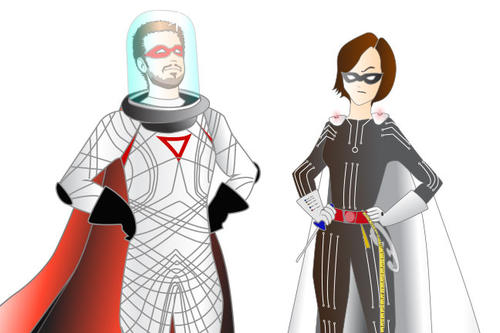
A recreation of Marty McFly’s self-tailoring jacket for Back to the Future Day is a fun side-project for students and researchers at the U of M Wearable Technology Lab (WTL), but wearable tech is no longer the exclusive realm of science fiction.
Brad Holschuh, co-director of the WTL along with Lucy Dunne, has already created skin-tight spacesuits to augment astronauts in zero gravity.
Meanwhile, Lucy Dunne‘s junior year studio course travels to NASA headquarters each year to present their latest designs.
Down on planet earth, wearables are finding practical footing.
“Wearable tech is no longer relegated to hackers in basements taping circuits to their bodies and calling it a wearable system. We can make wearables that look good, that are highly functional, and that can change your relationship with what you are wearing,” says Holschuh.
Dunne and Holschuh believe that the way people view clothing is simply out of date.
"What if you had a garment that could change its shape, or color, or porosity, or heat settings? Suddenly the decision changes from “what am I going to wear?” into “how do I want my garment to adapt today,” says Holschuh.
“We are working towards that reality, and it represents a revolution.”
—Illustration by graduate student Mary Ellen Berglund.
Designing a Smarter Compression Garment
This spring, Holschuh and Dunne were awarded a grant to develop a smart compression garment that will be used to treat common medical conditions including vascular disease and sports injuries.
Hug for Children with Sensory Processing Disorder
Students Julia Duvall and Nicholas Schleif have won an international student design competition with their deep pressure vest that “hugs” children with sensory processing disorder.
- Categories:
- Architecture and Design





